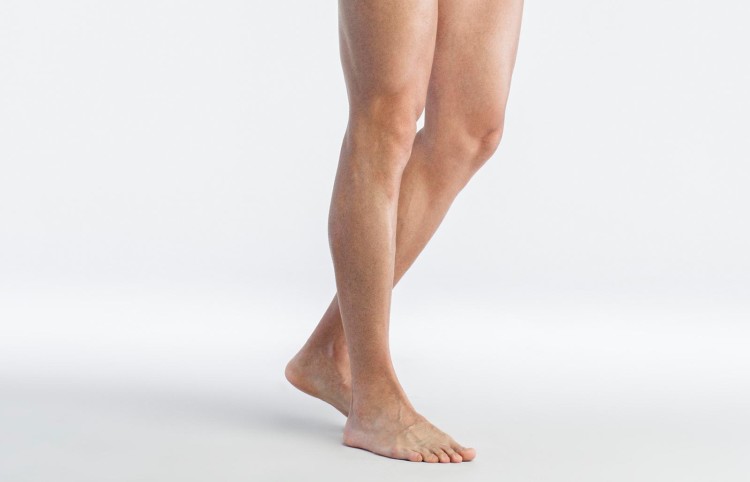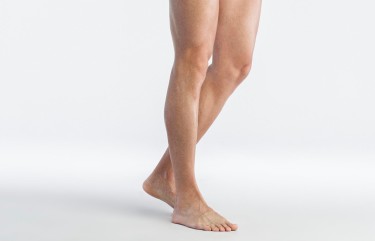Calf Reduction: What You Need to Know
Pros & cons
How much it costs
Botox for calf reduction
Surgical options
How long results last
How long recovery takes
Fast facts
Calf reduction surgery can slim and contour the lower legs, but there are also nonsurgical calf reduction treatments. These procedures tend to target the medial gastrocnemius muscle and, in some cases, the soleus muscle, to streamline muscular calves.
There is a growing demand for calf reduction surgery, which is especially popular in South Korea.
The ideal candidate for calf reduction is someone who is unhappy with the size or shape of their calves, or one who has severe calf hypertrophy. People excess skin and those who are overweight are not considered good candidates.
The majority of RealSelf members say that their results were Worth It, allowing them to wear skinny jeans and shorter skirts or easily zip up tall boots. But there are some potential risks to consider, before you decide whether a procedure is right for you.
Pros
- It streamlines the shape and size of the calves.
- Some treatment options can tighten mildly lax skin and reduce excess fat in the calf area.
- Noninvasive procedures, such as Botox, offer low-risk solutions with no downtime.
Cons
- Results vary. While a nonsurgical option may create results for one person, someone else may not see the results they wanted and need a different approach (like surgery).
- Results from Botox are temporary, so you’d need maintenance appointments a few times a year to keep the same appearance.
- Calf reduction surgery can aggravate knee joints by making them bear more weight post-procedure. People with existing weight or joint conditions may have complications or pain.
- Calf resection (partial muscle removal) is a serious surgical procedure. Recovery time can be extensive, and risks include calf asymmetry, scarring, persistent swelling, blood clots, and prolonged pain. Athletic ability may also be diminished.
- Other potential side effects of calf reduction procedures include soreness, lingering nerve pain, hardened fat, and sagging skin.
- Average Cost:
- $6,625
- Range:
- $2,000 - $19,500
Your cost will depend on your provider’s level of experience, their practice location, and the type of calf reduction procedure you choose.
Botox injections can slim calves. This noninvasive treatment temporarily reduces muscle activity, causing the calf to shrink without hindering your movement post-procedure.
It can take a few weeks to start seeing results, and you’ll need maintenance treatments every four to six months to maintain them. But this can be a gateway to more permanent procedures, since it allows you to “try out” a smaller or less shapely calf.
Related: Everything You Need to Know About Those Botox Muscle-Atrophy Rumors.
Radiofrequency calf reduction is another nonsurgical option. This treatment uses radiofrequency energy to damage nerves in the calf muscles, which can cause them to atrophy and look slimmer.
RF energy can also heat fat cells in the calves, damaging some of them to the point that the body naturally flushes them out over time.
- Calf liposuction: “Liposuction is the gold standard for treatment of large calves and ankles and generally provides excellent results,” says New York City plastic surgeon Dr. John A. Perrotti. If you have bulky calves or ankles (sometimes called cankles) due to excess fat deposits, liposuction—especially energy-assisted liposuction techniques like VASER lipo—can reduce calf size and reshape the lower leg. The recovery period for this is about a week, and it is more expensive than nonsurgical options. However, results are more predictable, you’ll see them more quickly, and the fat that’s sucked out is permanently gone. Expect to need about a week of downtime.
- Selective neurectomy: This procedure is considered a minimally invasive surgical method, because the only incisions are made behind the knee. It actually severs nerves to allow the calf muscles to atrophy, which eventually slims thick calves. The highest risk with neurectomy is accidental injury to adjacent nerves, which can impair calf function. This procedure is permanent, so carefully consider the risks and potential for knee joint pain before you settle on it.
- Partial muscle removal (muscle resectioning): If your main concern is a bulky (hypertrophic) calf muscle, rather than excess fat, muscle resectioning is an option. It's an invasive plastic surgery procedure, and—like any serious cosmetic surgery—comes with more risks and downtime. After an initial incision behind the knee, your surgeon will carefully remove muscle fibers while avoiding nerves, to reduce the size of your calves. This surgery produces permanent, irreversible results. Recovery from partial muscle removal can take up to six weeks.
How long your calf reduction lasts depends on which treatment option you choose. The surgical options outlined above produce permanent results.
Patients who choose Botox will need maintenance treatments every four to six months.
Any muscle growth or weight gain can potentially add more bulk to the calves post-treatment.
Recovery time periods for calf-reduction procedures vary by treatment.
- Botox comes with no downtime.
- Liposuction recovery time can be up to a week.
- Muscle resectioning surgery recovery takes up six weeks.
Expect to rest and avoid walking as you recover from liposuction or muscle resectioning. You might also need to wear elastic or compression socks to help aid healing and reduce swelling.
Updated June 13, 2023

